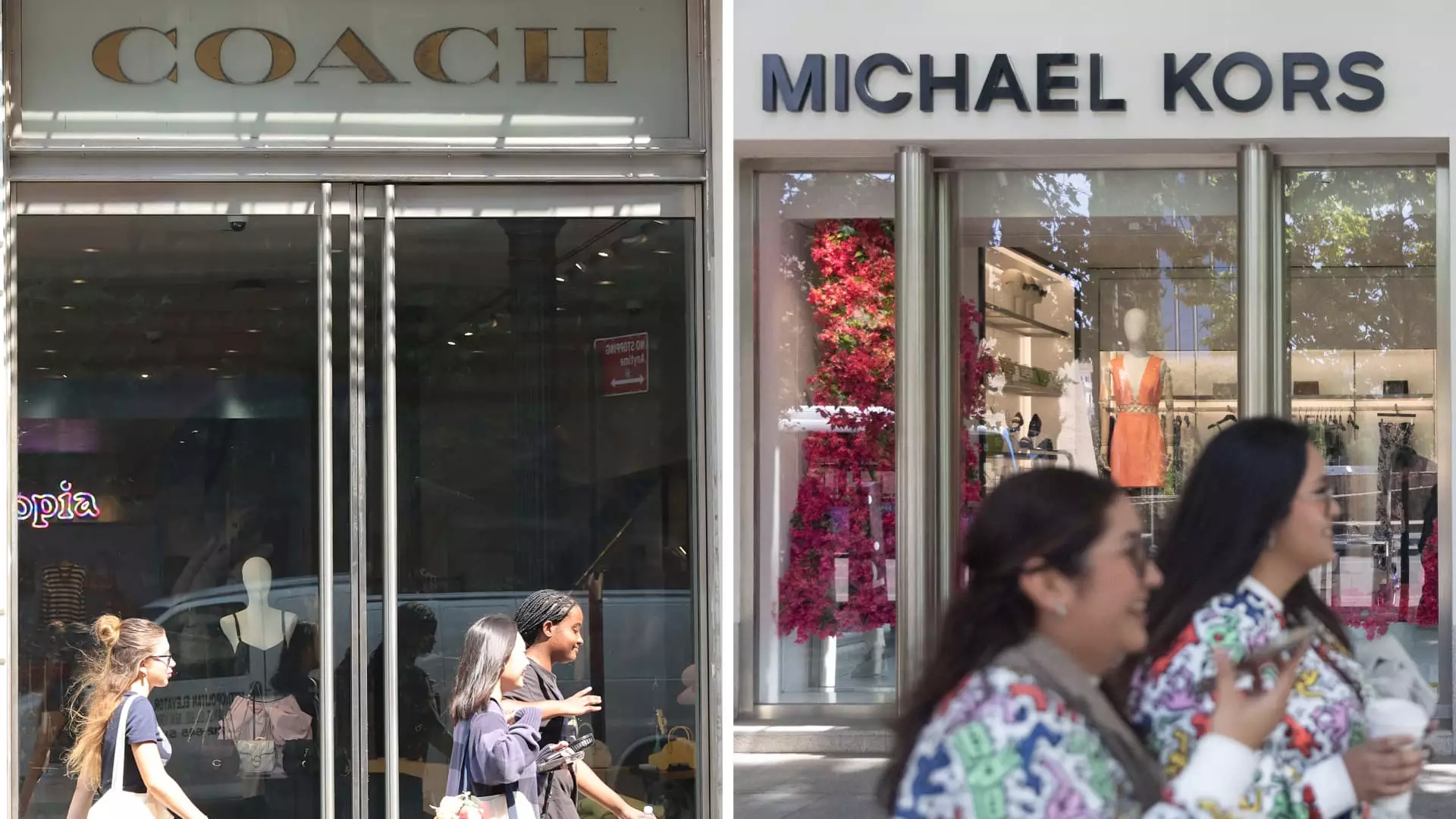The landscape of luxury fashion recently faced a significant challenge when a federal judge intervened to halt Tapestry’s proposed acquisition of Capri Holdings Limited. This move came after a brief trial held in New York, where Judge Jennifer Rochon sided with the Federal Trade Commission (FTC), granting a preliminary injunction that obstructs what was poised to be a monumental merger between two of America’s most prominent luxury companies. The impact of this decision rippled through the stock market, where Tapestry’s shares surged by 10%, while Capri’s plummeted by approximately 50%.
This proposed $8.5 billion deal aimed to consolidate Tapestry’s three brands—Coach, Kate Spade, and Stuart Weitzman—with Capri’s Versace, Jimmy Choo, and Michael Kors into a single corporate entity, creating an industry behemoth. However, the merger’s denial underscores the challenges inherent in the fashion sector, characterized by fierce competition and an ever-evolving marketplace.
The crux of the matter lies in the FTC’s strong opposition to the merger. The government agency argued that bringing these two luxury giants together would lead to reduced competition in the affordable handbag market, adversely affecting consumers’ access and potentially diminishing employee benefits. The FTC’s position reflects a broader regulatory environment where antitrust concerns increasingly dominate corporate mergers and acquisitions.
The preliminary injunction issued by Judge Rochon is rooted in a sealed opinion that has yet to be made public, leaving many questions unanswered about the legal rationale behind the decision. Such opacity in judicial reasoning can fuel speculation and uncertainty in the corporate world, possibly deterring future mergers in the industry. It also adds a layer of complexity for Tapestry, which has already indicated plans to appeal the ruling, arguing that the merger would ultimately serve consumer interests rather than hinder them.
The financial ramifications of this ruling are multifaceted. Tapestry has entered into a merger agreement that obligates it to compensate Capri for incurred expenses in the event of a failed acquisition. This agreement entails a financial commitment ranging from $30 million to $50 million if the deal collapses due to regulatory reasons, which poses a significant risk for Tapestry. Meanwhile, Capri faces the prospect of a hefty $240 million breakup fee should it opt to withdraw from the proposed merger, further complicating its financial landscape.
As the market reacts to this development, the implications extend beyond mere stock fluctuations. The luxury retail sector is known for its volatility, and heightened scrutiny from regulatory bodies like the FTC could signal a more cautious approach to future mergers. For consumers, the stakes are high—less competition may lead to higher prices for luxury goods, a concern exacerbated by recent inflationary pressures affecting consumers across all income levels.
The ruling arrives at a pivotal moment when consumer purchasing behavior is increasingly sensitive due to rising inflation. The Biden administration has emphasized the importance of competition in keeping prices low, a sentiment echoed by various political figures advocating for regulatory oversight. This political backdrop influences not only public perception but also dictates how companies operate within the market.
The FTC, under Chair Lina Khan, has adopted an aggressive stance toward antitrust enforcement, catching the attention of industries beyond luxury fashion, including grocery and technology. This trend indicates a potential shift in how major companies approach mergers, with greater caution likely required to navigate the regulatory landscape.
During the trial, key witnesses for the FTC presented data suggesting that the merger could lead to price hikes in handbags and accessories, challenging Tapestry and Capri’s assertion that their merger would enhance consumer choice and product quality. Tapestry’s legal representatives contended that the two companies serve different market segments and argued that they invigorate competition through innovative product offerings. Such a claim begs the question: can two high-profile competitors truly contribute to a dynamic marketplace, or do they risk stifling it by eliminating alternatives?
As Tapestry contemplates its next move in light of the injunction, the broader implications of this case serve as a cautionary tale within the luxury fashion industry. The episode highlights the delicate interplay between competitive ambition and regulatory scrutiny, illustrating the complexities companies must navigate in their pursuit of market share. Tapestry’s commitment to appeal the ruling, juxtaposed with Capri’s financial vulnerabilities, reflects a tumultuous period for both brands. Ultimately, the battle for market dominance will not only shape their trajectories but also significantly impact the ever-evolving landscape of consumer luxury fashion.


Leave a Reply